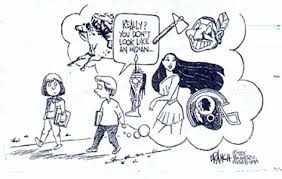Latin-American movies became very popular in the 1930’s and 1960’s, and there were many popular Mexican movies, as well as some blockbusters. One film that gained enormous popularity worldwide is Como agua para chocolate (1992). This movie is a story about a girl named Tita who was raised on a ranch by her strict mother, Dona Elena. The film takes place during the Mexican revolution, a time when everything about the characters’ lives are changing rapidly. Tita’s sister, Rosaura, marries a man named Pedro. Rosaura is Tita’s older sister, and there’s a law that states younger sisters must not marry and stay with the family to take care of her mother. However, Pedro is actually in love with Tita, but is not allowed to marry her because of this rule. He only marries her sister to be able to be close to Tita. Pedro buys Tita flowers, however Tita’s mother Dona Elena orders her to throw the flowers away, because she knows that Pedro is in love with her and not in love with her sister. However, Tita instead of throwing the flowers away makes them into a sauce that she serves when she makes her family dinner. Years go by and Dona Elena passes away. Pedro is still married to Rosaura despite his feelings for Tita. Pedro and Tita become closer, and at one point Tita thinks she may be pregnant with Pedro’s child, but that ends up not being the case. Years later, Rosaura passes away, and Pedro and Tita are able to be together at last. They move in together, but Pedro soon dies in Tita’s arms. Tita kills herself so she can be with Pedro forever in life and death.
The director of the film is Alfonso Arau who was a very famous director, actor, producer and writer of many films during the Golden Age of Mexican films. Arau was also briefly married to Laura Esquivel, who is the author of the book that Como agua para chocolate is based on. The style of the movie is magical realism. Leo Brouwer composed the film score in Como agua para chocolate. Brouwer was raised in Havana, Cuba and was from a musical family. His great uncle, Ernesto Lecouna was a famous composer, and many of his other family members were established composers as well as musicians. Leo Brouwer learned the guitar at an early age and started composing music when he was a teenager. He furthered his education in the United States, then moved back to Cuba to start his career. He composed film music as well as guitar music.
In the movie, Como agua para chocolate, the musical theme comes back over and over again during every major plot point, especially involving the forbidden lovers Pedro and Tita. This theme comes back again and again to prove the strength of Tita and Pedro’s love, and how even in death their souls will stay bonded to each other because they are meant to be in love forever.
For the soundtrack, Brouwer uses many stringed instruments such as violins, violas, cellos, and string basses to produce a warmth produced by a string timbre. The melody comes back during specific plot points to emphasize the theme of the story. Often times in soundtracks the theme of the composition represents in many ways the theme of the story. During the love-death scene of the story, a different melody counterracts the regular melody representing the freedom Pedro felt when finally confessing his love to Tita.
This film is one of many Mexican films that have become famous throughout the world and reached blockbuster status during the Golden Age of films. Leo Brouwer composed an unforgettable soundtrack that will be remembered for years to come.
https://www.jstor.org/stable/10.1525/j.ctv3znxn1.7?seq=1
Roberts, John Storm. The Latin Tinge : The Impact of Latin American Music on the United States. 2nd ed., Oxford University Press, 1999.

